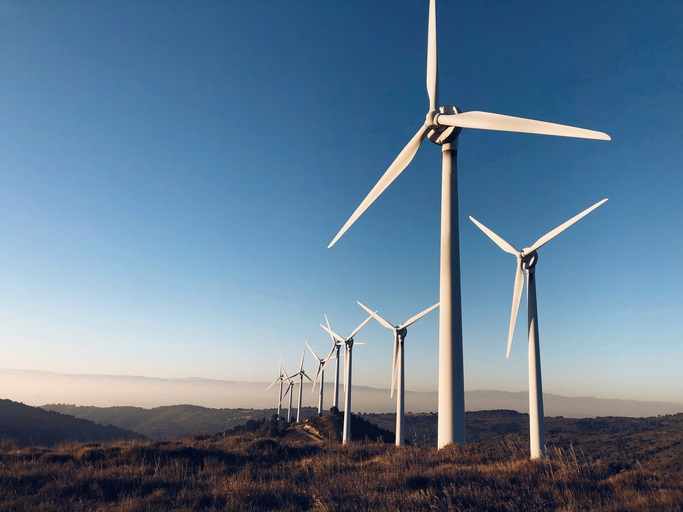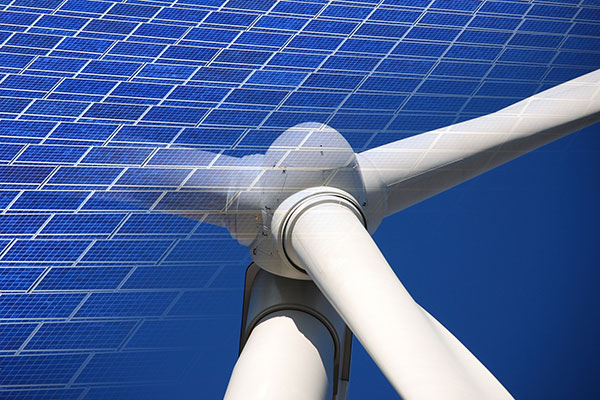Are the 7% yields on renewable energy trusts worth the risk?
18th May 2023 09:38
by Sam Benstead from interactive investor
Bonds now compete with ‘alternative’ investments for income seekers – but yields have risen in the clean energy space.

Investors can secure up to 9% yields investing in renewable energy infrastructure investment trusts, due to rising interest rates causing a re-pricing of valuations, which has punished share prices.
Most renewable energy trusts also trade on a discount to their net asset value (NAV), which suggests investors are getting a bargain and may see some uplift to share price alongside bigger dividends.
- Invest with ii: Buy Investment Trusts | Top UK Shares | Open a Trading Account
The highest yielding renewable energy trusts, according to data from Morningstar as of 11 May 2023, are: Triple Point Energy Transition (8.9% yield); Harmony Energy Income (7.1%); and Ecofin US Renewables Infrastructure (7.1%).
Popular high-yielding trusts include US Solar Fund (7%); JLEN Environmental Assets (5.9%); and Greencoat UK Wind (5.4%).
- Bond Watch: UK rates hit 4.5% but bond investors watching US closely
- ‘High risk? I don’t see it that way’: the investment secrets of an ISA millionaire
Calculations from Winterflood, a stockbroker, show that the average yield in the sector is now 5.8%, above the 5.5% from standard infrastructure trusts, 4.4% for UK property trusts, 3.5% for the FTSE All-Share Index, 5.4% for corporate bonds and 3.7% for gilts, as of the end of April.
Big discounts are also available for bargain hunters, such as US Solar Fund (16.9%); Triple Point Energy Transition (37%); and Gore Street Energy Storage Fund (10.7%).
Not all renewable energy trusts are trading on discounts, however. Gresham House Energy Storage (LSE:GRID) trades at a near 5% premium, and Thomas Lloyd Energy Impact Trust (LSE:TLEI) is at nearly a 4% premium to its NAV, but shares are currently suspended owing to issues valuing their solar farm assets in Asia.
| Name | Market cap (£m) | Discount/Premium (%) | Dividend yield (%) |
|---|---|---|---|
| Triple Point Energy Transition | 63.0 | -36.2 | 8.7 |
| NextEnergy Solar | 617.4 | -9.1 | 8.0 |
| US Solar Fund | 245.5 | -22.5 | 7.6 |
| Ecofin US Renewables Infrastructure | 109.1 | -16.8 | 7.1 |
| Harmony Energy Income Trust | 258.4 | -9.6 | 7.0 |
| Foresight Solar Fund | 675.0 | -10.1 | 6.8 |
| Aquila Energy Efficiency Trust | 73.5 | -23.3 | 6.8 |
| Gore Street Energy Storage | 495.8 | -9.7 | 6.8 |
| SDCL Energy Efficiency Income | 1034.2 | -12.0 | 6.4 |
| Bluefield Solar Income Fund | 845.0 | -3.6 | 6.1 |
| Greencoat Renewables | 1235.4 | -4.0 | 5.9 |
| JLEN Environmental Assets Group | 799.1 | -2.9 | 5.9 |
| Atrato Onsite Energy | 127.2 | -8.0 | 5.9 |
| The Renewables Infrastructure Group | 3094.5 | -6.9 | 5.8 |
| Aquila European Renewables | 381.9 | -12.2 | 5.6 |
| Octopus Renewables Infrastructure Trust | 584.1 | -4.6 | 5.6 |
| VH Global Sustainable Energy Opportunities | 417.4 | -9.2 | 5.6 |
| Greencoat UK Wind | 3650.6 | -5.9 | 5.6 |
| Downing Renewables & Infrastructure | 199.2 | -9.5 | 5.0 |
| Gresham House Energy Storage Fund | 860.7 | 1.6 | 4.6 |
| Thomas Lloyd Energy Impact Trust | 183.6 | 3.8 | 2.4 |
| HydrogenOne Capital Growth | 74.2 | -40.8 | 0.0 |
Source: Morningstar/Association of Investment Companies, as of 17 May 2023.
Why interest rates are harming this sector
Investors have been selling renewable energy infrastructure trusts, which has led to the discounts appearing, due to the impacts of rising interest rates.
As interest rates rise, so do bond yields, which increases the alternatives available to income investors. The appeal of owning complicated and expensive to manage renewable energy projects for their income decreases when investors can simply buy a US or UK government bond and achieve a smaller, but similar level of income.
Higher interest rates also increases the cost of debt, which is a key tool for renewable infrastructure trusts to purchase new assets.
- Nick Train’s performance boosted by three stocks hitting record highs
- Investment trust suspends trading on valuation uncertainty
Another problem for the sector has been that the UK government, in light of high energy costs and the rising cost of living in Britain, has threatened to impose extra taxes on profits from power generators.
Trusts in the sector have fallen 5% in value on average over the past 12 months, including dividends, but are up 33% over five years.
But with bonds now offering genuine alternatives for income investors, is it worth backing renewable energy for slightly higher yields, but potentially with greater risks and higher fees?

Renewable energy trusts or bonds?
Paul Flood, manager of the BNY Mellon Multi Asset Income fund, says that bonds are competing for the capital of income investors now that yields are higher.
“Five years ago bonds yielded around 1%, but alternatives gave you 6% yields, as well as the potential for capital gains. It was a no-brainer to own renewables.
“But 2022 was a shock year that reset bond prices, making them buyable again. Another reason to own bonds over renewable energy is that windfall taxes have reduced our appetite for allocating capital there. This is clearly a negative headwind for the sector as there is a lack of trust in their income streams if the government can rewrite the tax rules. The US is looking more attractive now for clean energy than the UK.”
Flood's portfolio has moved from 12% in bonds at the beginning of 2022 to just under 30% today. Renewables have gone from 12% to 8% over the same period.
“We consciously sold renewables and bought government bonds and investment grade bonds,” Flood said.
However, Flood does still like the sector, and owns Greencoat UK Wind and Renewables Infrastructure Fund.
“The inflation-linkage of revenues is good for these trusts, and inflation is likely to be higher for longer,” said Flood.
James Mee, manager of the Waverton Multi-Asset Income fund, has also been adding to bonds this year, particularly high-quality investment grade bonds.
He says that renewable energy infrastructure trusts can be very complicated and different from one another.
“Understanding how they work is critical,” he said.
- The ‘cheap’ investment trusts tipped as buys
- The eight income investment trust heavyweights: how sustainable are the dividends?
However, he still argues that renewable energy and “real assets” more generally have a place in an investor’s portfolio.
“Real assets grow capital over the long term and pay an income. Risk is not volatility – it is permanent loss of capital,” Mee said.
Numis, the stockbroker, is positive on Greencoat UK Wind, saying that it was a “high-quality business” that can deliver 9% annual total returns a year.
Last year was a record year in terms of earnings and valuation of its assets for Greencoat, meaning it has delivered the strongest NAV total returns of the listed renewable peer group since its flotation in 2014.
Numis said: “We continue to view it is as a high-quality business with one of the most transparent business models, evidenced by the clarity of results and quality of disclosure. We agree with management that the potential returns of 9% a year over time with inflation protection remain attractive and we retain a trading buy on the shares.”
Share buybacks begin
Some renewable energy infrastructure trusts have been buying back their own shares as they seek to narrow their discounts.
These include SDCL Energy Efficiency Income (SEIT); Downing Renewables & Infrastructure (DORE); and Foresight Solar (FSFL), which trade on 12.8%, 8.6% and 9.7% discounts respectively.
SEIT announced its buybacks policy in April and has purchased 5,297,649 ordinary shares as of the beginning of May, with £20 million of cash available for buyback.
DORE announced buybacks in March and has purchased 85,000 ordinary shares across three transactions as of the beginning of May.
- The highest yielding money market funds to park your cash in
- Day in the life of a fund manager: M&G's Eva Sun-Wai
- Investment trust share buybacks: do they benefit private investors?
FSFL recently announcing a fresh £10 million buyback programme and has spent £36.7 million so far this year buying back 43.1 million of its shares.
However, Shayan Ratnasingam, of Winterflood, says that share buybacks are an inefficient use of capital and that he expects them to do little to close discounts.
He said: “It is detrimental to the growth of these funds, and will reinforce investor behaviour to expect or demand buybacks in future episodes of discount widening. The call for share buybacks in this area suggests that there is somewhat of a mismatch between some investor time horizons in the closed-ended Infrastructure space and the duration of the long-dated assets in which they are investing.”
These articles are provided for information purposes only. Occasionally, an opinion about whether to buy or sell a specific investment may be provided by third parties. The content is not intended to be a personal recommendation to buy or sell any financial instrument or product, or to adopt any investment strategy as it is not provided based on an assessment of your investing knowledge and experience, your financial situation or your investment objectives. The value of your investments, and the income derived from them, may go down as well as up. You may not get back all the money that you invest. The investments referred to in this article may not be suitable for all investors, and if in doubt, an investor should seek advice from a qualified investment adviser.
Full performance can be found on the company or index summary page on the interactive investor website. Simply click on the company's or index name highlighted in the article.